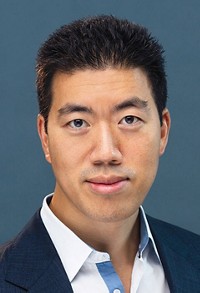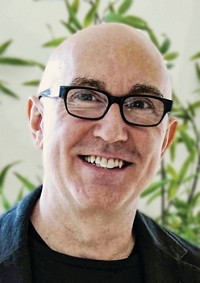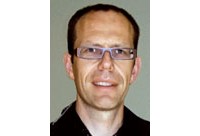Advertisement
Grab your lab coat. Let's get started
Welcome!
Welcome!
Create an account below to get 6 C&EN articles per month, receive newsletters and more - all free.
It seems this is your first time logging in online. Please enter the following information to continue.
As an ACS member you automatically get access to this site. All we need is few more details to create your reading experience.
Not you? Sign in with a different account.
Not you? Sign in with a different account.
ERROR 1
ERROR 1
ERROR 2
ERROR 2
ERROR 2
ERROR 2
ERROR 2
Password and Confirm password must match.
If you have an ACS member number, please enter it here so we can link this account to your membership. (optional)
ERROR 2
ACS values your privacy. By submitting your information, you are gaining access to C&EN and subscribing to our weekly newsletter. We use the information you provide to make your reading experience better, and we will never sell your data to third party members.
Biological Chemistry
ACS Award in Pure Chemistry
January 9, 2006
| A version of this story appeared in
Volume 84, Issue 2
Sponsored by Alpha Chi Sigma Fraternity and the Alpha Chi Sigma Educational Award Foundation
David R. Liu, now a 32-year-old chemistry and chemical biology professor at Harvard University, fell in love with chemistry as a Harvard freshman. That year, one of his organic professors encouraged him to approach Nobel Laureate Elias J. Corey about doing research. Liu's more than three years with Corey's group resulted in three publications in the area of sterol biosynthesis and an undergraduate thesis that Corey lauds as "almost the equivalent of a good Ph.D. thesis."
Liu modestly calls such praise "generous." He says: "To this day, I'm not entirely sure why Professor Corey was willing to take a freshman undergraduate who had only one semester of organic chemistry, but I'm grateful that he did. It was a great exposure to a mixture of synthetic organic chemistry and biological chemistry. That's a mixture that I continue to find fascinating."
After graduating from Harvard in 1994, Liu moved to the University of California, Berkeley, where he earned his Ph.D. under the direction of Peter G. Schultz. Liu's doctoral research focused on developing methods to expand the genetic code by incorporating unnatural amino acids into proteins.
"Working for several years in that area gave me a deep appreciation for the powerful ways in which biologists and biology can manipulate natural molecules, proteins, and nucleic acids," Liu says. "The start of my independent research group at Harvard was inspired by this reverence for the way in which biological evolution can lead to the rapid synthesis and discovery of proteins and nucleic acids with remarkable chemical properties."
In 1999, Liu went straight from grad school to a position as an assistant professor at Harvard, where he has quickly risen through the ranks. In 2003, he became the John L. Loeb Associate Professor of the Natural Sciences and associate professor of chemistry and chemical biology. He was promoted to full professor at the age of 31.
Among his research activities at Harvard, Liu uses DNA as a template to direct the synthesis of small organic molecules, bringing such advantages as amplification and evolution to synthetic chemistry. "This extraordinary advance is just the first step along what will be a great new direction for bioorganic chemistry and chemical biology," Corey says. Corey is "confident that David will be a leader at the frontier of chemical biology and medicine for many years to come."
Liu's "unique brand of biological chemistry combines practical aspects from biological organization and evolution," says Carolyn R. Bertozzi, a chemistry professor at UC Berkeley. "His work is truly novel and reflective of an extraordinary creative mind."
For fun, Liu pursues several "unusual and highly geeky hobbies." Out of Mylar and a carbon fiber skeleton, he designed a 7-g remote-controlled airplane—which he calls the Wisp—that can fly in a room as small as a bathroom, the realization of a childhood dream to be able to fly in the house. He also enjoys building robots out of Legos, including a heat-seeking "Mouse-A-Pult" that entertains his cats by throwing toy mice.
Despite his relative youth, Liu has already garnered a number of awards, including the ACS Arthur C. Cope Young Scholar Award and the Camille Dreyfus Teacher-Scholar Award. Last year, he was named an investigator by the Howard Hughes Medical Institute.
The award address will be presented before the Division of Organic Chemistry.—Celia Arnaud






Join the conversation
Contact the reporter
Submit a Letter to the Editor for publication
Engage with us on Twitter